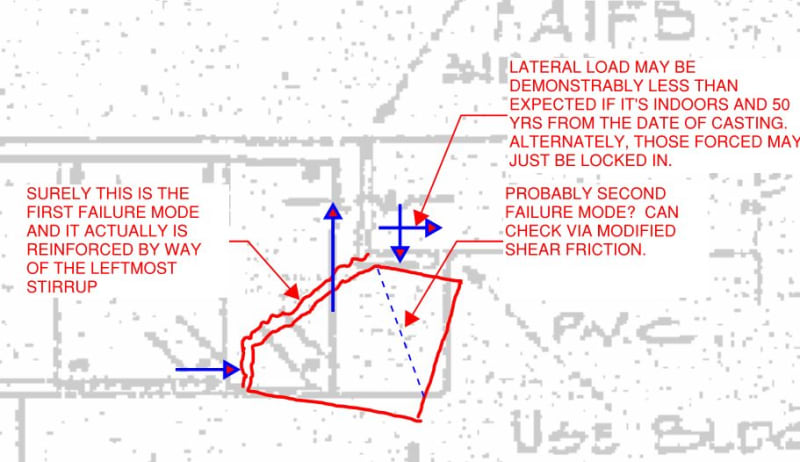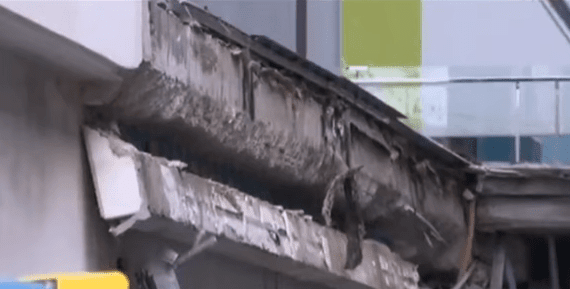Hi all,
During an expansion joint repair work for a parking garage, we discovered that a ledge beam has no reinforcing in the ledge. Please see the attached sketch.
This building is over 50 years old and had no issues with the ledge. When we reviewed the existing drawings, we confirmed that the ledge did not have reinforcing.
My suggestion to the owner was to reinforce this ledge or replace the beam even though it has performed satisfactorily for many years. Any comments are appreciated.
During an expansion joint repair work for a parking garage, we discovered that a ledge beam has no reinforcing in the ledge. Please see the attached sketch.
This building is over 50 years old and had no issues with the ledge. When we reviewed the existing drawings, we confirmed that the ledge did not have reinforcing.
My suggestion to the owner was to reinforce this ledge or replace the beam even though it has performed satisfactorily for many years. Any comments are appreciated.


